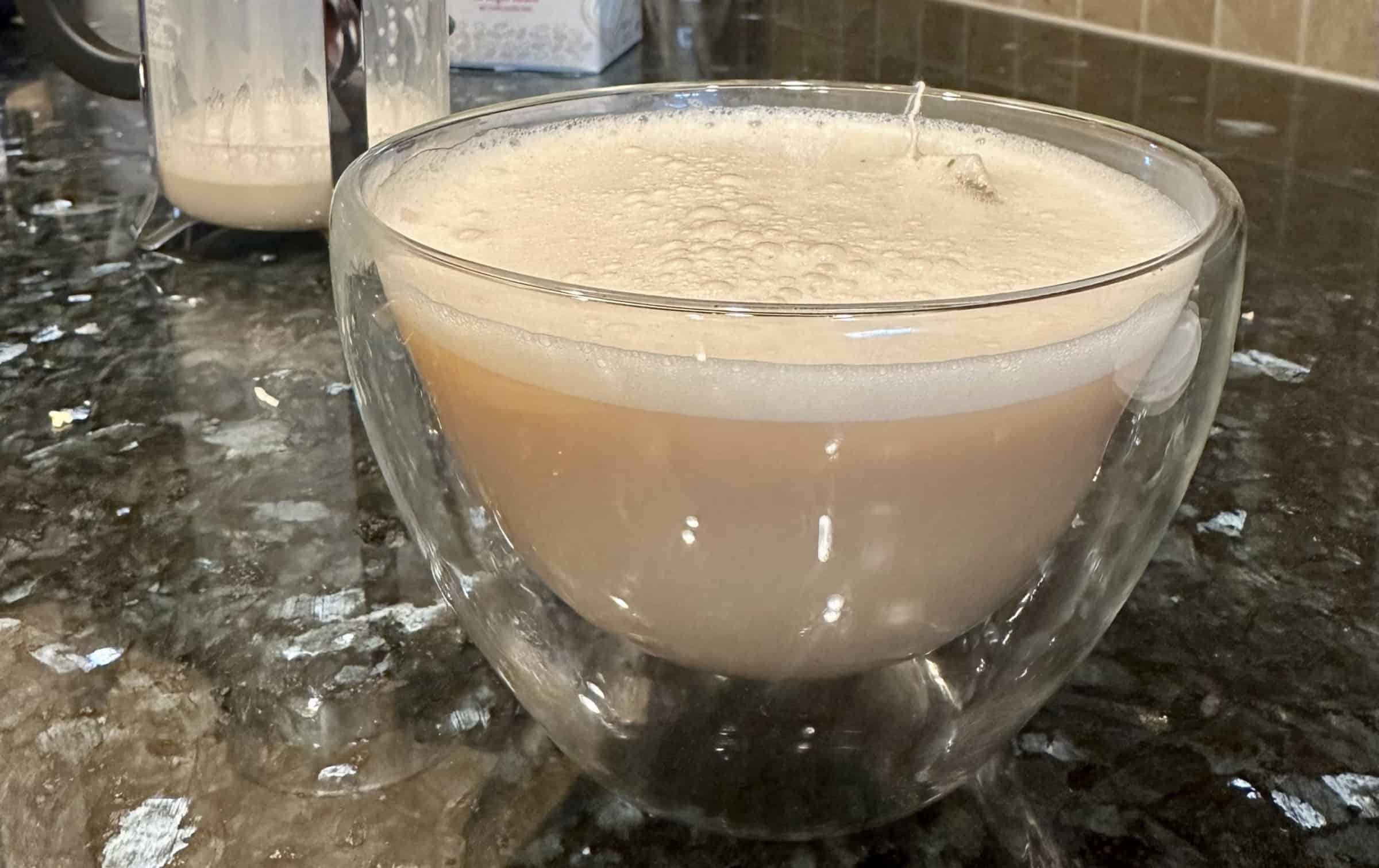Affiliate disclosure: We are reader-supported. This means that we may earn a commission if you buy an item using one of the links. For our reviews, we purchase products ourselves and review them independently. Read more about our methodology.
What is a French Press?
The French press, also known as a cafetière, is a very popular method of brewing coffee. French presses are comprised of a chamber and a plunger, which has a built-in filter.
When you brew coffee in a French press, you add coffee grounds and hot water into the chamber and you’ll let it steep for several minutes. You then press the plunger down into the chamber to extract additional flavonoids from the coffee grounds and to ensure no coffee grounds get into your cup of coffee. Since the plunger has a built-in filter, you won’t need to use paper filters for brewing.
French presses remain a well-loved coffeemaker because they are affordable, easy to use, require no extra supplies, and come in a variety of materials and sizes. For a mid-tier model, a 30- to 35-oz French press runs about $20 to $30. French presses also come in a large assortment of sizes, colors, and materials. You can buy single-serve sizes up to 60 oz sizes or even larger sizes.
French presses can be made from glass, ceramic, metal, or other materials. Ceramic and glass French presses come in every color under the sun, so you can buy something to match your existing kitchenware.
When I started brewing coffee at home in my early twenties, the French press was the first coffeemaker I purchased, and I still use it to this day. It’s a classic for many reasons.
Step-by-Step Instructions for French Press
Brewing coffee in a French press is easy, and that’s part of the reason why we love it and recommend it for newbie at-home coffee brewers.
We included some essential information on what you need to get started with the French press before we dive into the instructions below.
| Supplies needed | None (besides coffee and hot water) |
| Coffee grind size | Coarse |
| Coffee to water ratio | 1:15 |
| Time to brew | 3-6 minutes, depending on the strength desired |
1. Gather your supplies
For brewing, you’ll need coarse ground coffee and hot water at around 200 degrees Fahrenheit. If you are like us and don’t use a thermometer to measure your water temperature, you can boil water and remove it from heat. Once it stops boiling, that’s about the right temperature.
You’ll want a coarse grind for your French press. This is because you’ll let the coffee steep in the hot water for a few minutes, so using a fine grind will produce a bitter taste and be harder to press. The rule of thumb is that the coffee should resemble flaky sea salt.
2. Optional: Pre-warm French press
We, personally, do not do this when we make coffee in our French press. However, if your French press is glass or steel, pre-heating it can help produce a better brew. Simply pour some warm to hot water into the French press and let it warm up. Once it’s warm, you can dump the water out.
3. Add your coffee grounds
4. Optional: Let your coffee bloom
Blooming your coffee allows gases to escape and improves the taste of the brew. We don’t always bloom our coffee when using a French press.
To bloom your coffee, you’ll add a small amount of hot water to the grounds–just enough to cover the coffee grounds. Let it sit for around 30 seconds or so. You should see the coffee grounds bubbling. This is the gas escaping.
5. Add hot water and let steep
Add the remaining amount of hot water to your grounds. Make sure the grounds are fully submerged. If there’s a crust or dry flakes at the top, stir to incorporate them into the water.
Let steep for between three and six minutes. Longer steeping will produce a stronger brew. We like to steep for about five minutes.
If you’re particular about your coffee, you can press the plunger down about halfway into the water and then pull it back up so it’s right under the water line. This can help ensure the coffee grounds are brewing evenly.
6. Press the plunger down
Press the plunger down to push the coffee grounds to the bottom.
7. Enjoy your cup!
8. Decant your coffee and clean your French press immediately
We don’t recommend leaving the coffee in the French press, because it will continue to steep and become more bitter. If you have leftover coffee after pouring out your cup(s), pour the leftover into another container. Make sure to wash your French press after brewing.
How to Clean Your French Press
Most French presses, unfortunately, are not dishwasher-safe. However, it’s best to check the manufacturer’s instructions to see if yours is.
Assuming you are handwashing the French press, you’ll want to rinse the chamber and the plunger to get out all of the coffee grounds. Use soap to scrub both the chamber and plunger.
Every once so often, you should take apart the plunger to clean it as it can get water scale and oil buildup. If you don’t, you may notice a sour or rancid taste in your coffee.
Alternative Uses and Methods
One great thing about the French press is that it has alternative uses. It can double as a tea brewer and as a manual milk frother.
How to Brew Tea Using a French Press
Brewing tea in a French press is easy. You can follow the directions above, but replace the coffee grounds with loose-leaf tea and skip the pre-warming and blooming steps. Steep your tea based on the type of tea and the manufacturer’s recommendations.
We also recommend decanting your tea after brewing as leaving it in the French press will cause it to become more bitter. You should wash your French press well after brewing tea to get rid of any lingering flavors, especially if you plan on using it to make coffee again.
How to Froth Milk in a French Press
A French press can be used to froth milk at home if you don’t have an electric milk frother or espresso machine. Be forewarned - it’s a good arm workout and it’s not going to produce coffeehouse foam, but it works in a pinch. Check out my results and the instructions below.

1. Heat up the milk of your choice
We tried this with oat milk, but it would work equally well with regular milk. For other types of non-dairy milk, this will work, but we recommend buying the barista versions if possible. The barista versions are designed to froth and foam better. Once you’ve selected your milk, heat it up to the desired temperature.
Make sure you have enough milk to fully submerge the plunger when the plunger is pressed all the way down. In our French press, which is around 30 oz, this was about one cup of milk. If the plunger isn’t fully submerged, it won’t foam the milk.
2. Put in the plunger and press up and down rapidly for at least 30 seconds
This is the arm workout. Once you’ve put the plunger in, pulse it up and down quickly for at least 30 seconds. Because air is getting forced out, there will be significant resistance when you push and pull the plunger. We found that small pushes and pulls produced better foam for our oat milk.
3. Pour into the beverage of your choice immediately and clean your French press
The foam is delicate, so we recommend pouring it into your beverage immediately. While it’s not going to produce thick, fluffy foam like an electric milk frother will, it’s decent option if you don’t have any other way to froth milk at home.
Make sure to clean your French press well after using it as a milk frother as any residue can affect the taste of any coffee you brew later.


